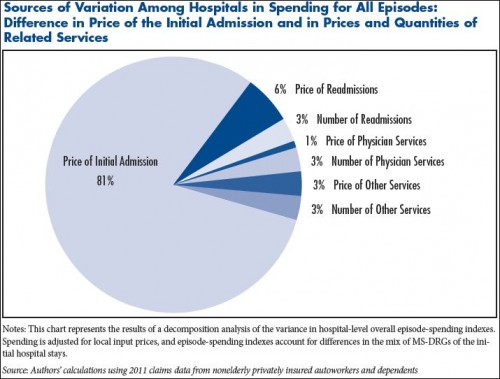Bundled payments are a great idea, but like all ideas they won’t be equally effective in all settings.
In Medicare, there is a compelling case for bundled payments—wide variations in post-acute care use are the main factor behind differences between high- and low-spending geographic regions and between high- and low-spending hospitals. Moreover, Medicare patients often have multiple chronic conditions that are complex to manage. But the results of this analysis show that the case for bundled hospital payments for the privately insured is much weaker—post-acute care and other ancillary services account for a relatively small share of overall spending on hospitalization episodes, and they account for almost none of the variation in episode spending from one hospital to another. [Links added.]
That’s from a recent research brief by Chapin White, James Reschovsky, and Amelia Bond. The following chart illustrates some of their findings.
The brief is ungated, so click through for details.



